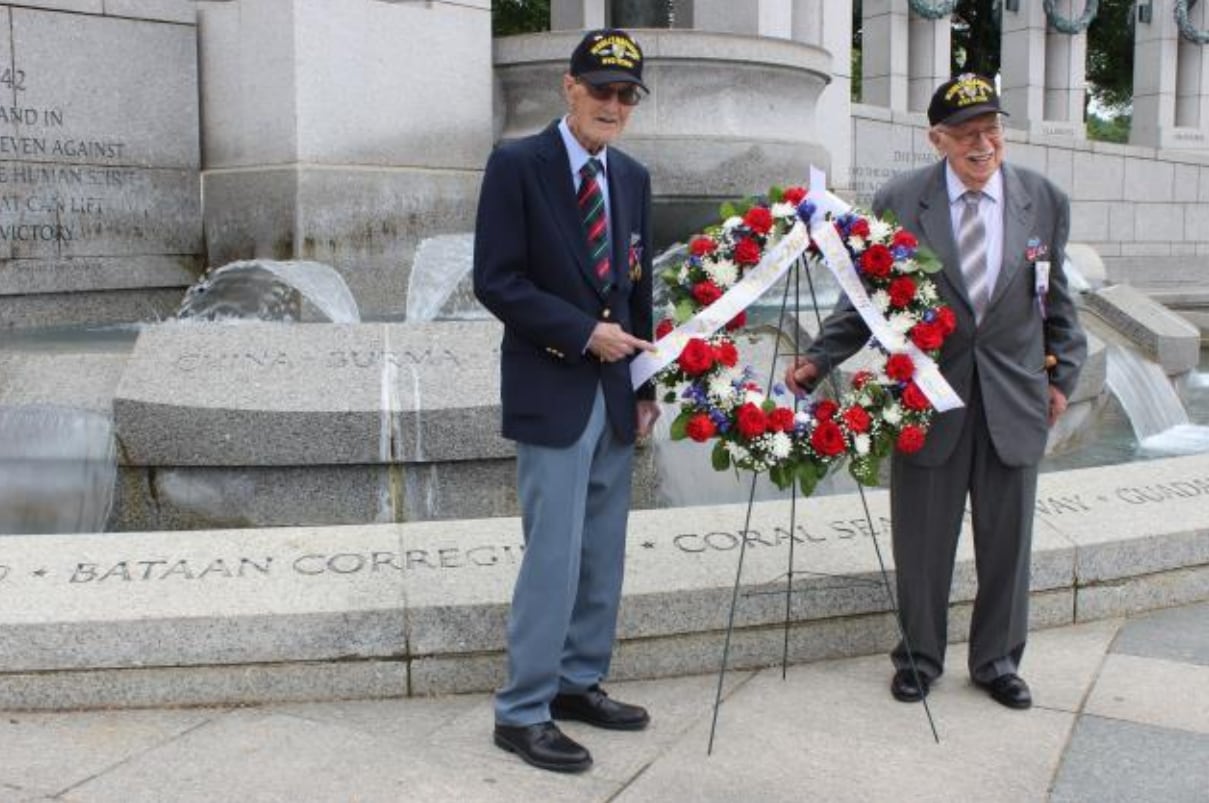Then there were 14.
That’s how many members of the 5307th Composite Unit Provisional — better known as “Merrill’s Marauders”— are still alive.
Two of the men who helped fight the Japanese in Burma — Bob Passanisi, 94, and Gilbert Howland, 96 — were recently in Washington, D.C., for a wreath-laying ceremony at the WWII Memorial to commemorate the 75th anniversary of the Burma mission.
They were also in D.C. to champion legislation that would award the Congressional Gold Medal to Merrill’s Marauders for their heroism and sacrifices that resulted in the U.S. seizing control of the Burmese capital of Myitkyina.
“I am proud of our unit and the mission we accomplished in Burma,” Howland told the Military Times via email. “We did not see ourselves as heroes. We had volunteered for a mission and we handled every situation that came our way. The end result tells how we did.”
The Marauders — which was named after their commander, Brig. Gen. Frank Merrill — traversed more than 800 miles of Burmese jungle and engaged in multiple battles with enemy troops. By the time they were deactivated on Aug. 10, 1944, the unit had lost more than 1,000 soldiers to both combat injuries and disease.
“For some unexplained reason, these men from all walks of life fused together as a single determined fighting force,” said Passanisi, also via email. “Everyone seemed to know just what to do without needing to be told.”
Passanisi was inspired to join the Army in 1942 following the attack on the U.S. Navy base in Pearl Harbor. He currently serves as the Marauders’ spokesperson and historian.
“I always felt proud that I was a Merrill’s Marauder, and even prouder today that people seem to recognize what an impossible mission the Marauder campaign was,” said Passanisi, who lives in New York.
Howland was attending Boston Trade School when news of unrest in Europe and Asia began reaching the U.S. He happened to come across a military-recruitment poster outside the South Boston Post Office in 1941 on his 18th birthday. After talking to his mother, he decided to enlist in the Army and help the war effort.
After the Marauders dissolved, he continued to serve his country during both the Korean and Vietnam Wars. He earned a triple Combat Infantryman Badge for his continued service.
“The military was my life,” Howland, who now lives in New Jersey, said. “The military taught me to have pride in the job you are doing and that carried over into my civilian life.”

Both still vividly remember some of the more harrowing moments of the Burmese campaign.
Passanisi distinctly remembered narrowly dodging an artillery shell attack on his command post. He said that he “made an unbelievable dive for my fox hole” and traveled 20 feet in one motion while dirt from the blast grazed his jungle boots.
Howland is still haunted by the Battle of Nphum Ga where the Japanese surrounded his battalion for 10 days. He was wounded on the fifth day and had to be moved away from his post. That night, Japanese troops got into his machine-gun position and killed the four-man crew on duty.
“I was not there to protect them and that has stayed with me all these years,” Howland said.
Despite all they went through, Passanisi and Howland are both still humbled by the Marauders’ place in WWII history, including that the 75th Army Regiment still wears their colors on their crest and “considers us their legacy unit,” according to Howland.
“That others continue to recognize what we did in Burma and they honor us for it, [which] makes me proud,” Howland said.
For Passanisi, Merrill’s Marauders is proof that “humans can endure much more than was thought to be possible.”
Both men had advice for active-duty service members and their fellow veterans.
“Always be ready and train well,” Howland said. “Take it seriously. You never know when your country will need you.”
On a similar note, Passanisi advised troops and veterans that determination and grit will allow them to “find the inner strength to be stronger and more durable than you can imagine.”
Spoken like a true Merrill’s Marauder.




